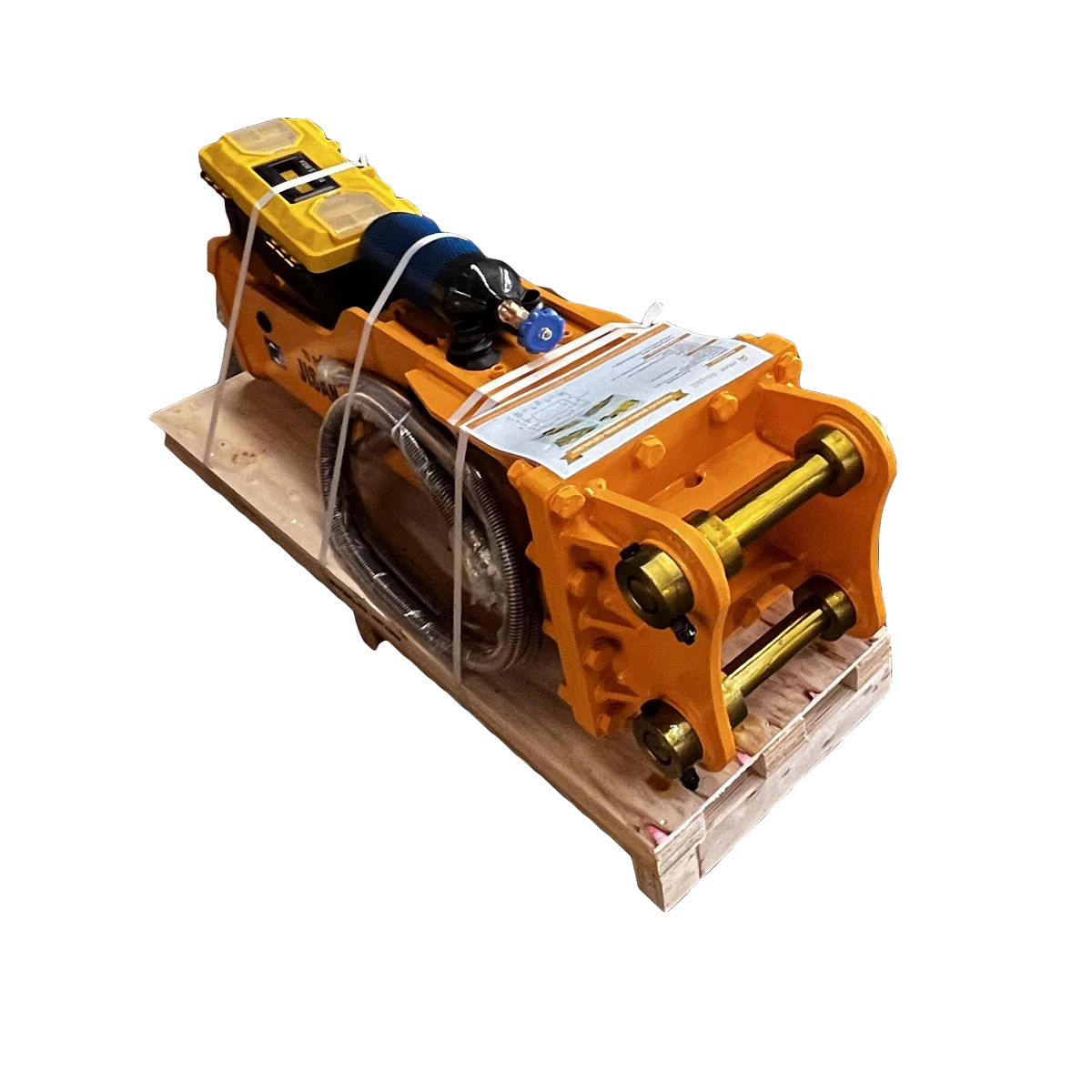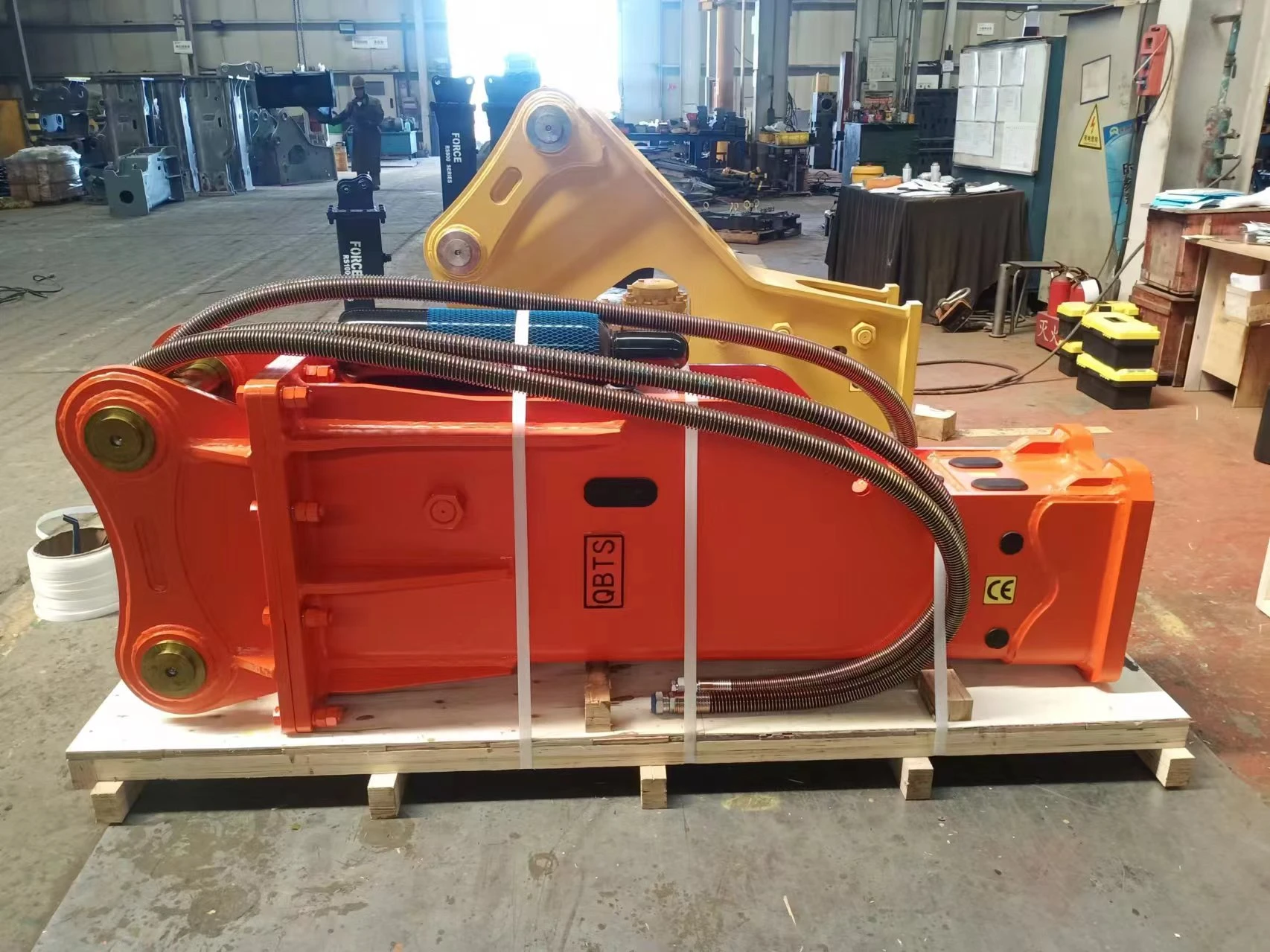Tips for Choosing Hydraulic Breakers or Chipping Hammers in Construction
Hydraulic breakers, often called chipping hammers, play a big role on job sites. They smash through concrete, rock, and asphalt without much fuss. Picking the right one keeps projects moving smoothly and cuts down on downtime. With so many options out there, it’s smart to think about what fits your needs.
Guangdong Kingho Technology Co., Ltd., a maker of excavator attachments since 2009, offers solid choices in this space. Their breakers come in side, top, and box types, built tough for real-world use. This guide breaks down key tips to help make that choice easier.

Understand Project Requirements
Before jumping into models, get a clear picture of the job at hand. Every site has its own quirks, and matching the breaker to those saves time and hassle.
Assess Work Environment
Start by looking at where the work happens. Urban spots with tight spaces need compact breakers that won’t swing wide. Think about a city demolition where noise rattles neighbors—pick a model with sound suppression. On rocky quarries, dust and debris fly everywhere, so go for sealed units. Guangdong Kingho’s box-type breakers shine here; their enclosed design keeps grit out, letting them run longer in harsh spots like mining ops.
Of course, weather plays a part too. Rainy sites mean more corrosion risks, so check for rust-resistant coatings.
Determine Breaking Force Needed
Figure out how much punch the breaker requires. Soft concrete might only need 1,000 foot-pounds of impact, but blasting through granite calls for 5,000 or more. Measure the material hardness first—use a simple rebound hammer test on site. For a 30-ton excavator tackling highway repairs, Guangdong Kingho’s heavy-duty breakers deliver steady force without straining the machine.
Don’t forget cycle rates. Faster hits, around 600 blows per minute, speed up small jobs like trenching.
Evaluate Frequency of Use
How often will the breaker see action? Daily grind on a big build demands something rugged. Weekend projects can get by with lighter models. If it’s running eight hours a day in a recycling yard, aim for breakers with auto-lube systems to cut maintenance stops. Guangdong Kingho models include features like this, helping crews stay productive without constant checks.
Evaluate Breaker Types
Once the basics are sorted, dive into the types available. Each handles tasks differently, and the right one can make tough jobs feel straightforward.
Compare Side Type Options
Side-type breakers mount on the excavator’s side, giving good visibility. They’re handy for vertical breaking, like walls or slabs. In a foundation dig, operators spot the chisel easily, avoiding mishaps. Guangdong Kingho’s side types use Q345 manganese steel for the body, holding up to 1,200 pounds of working weight without bending.
Review Top Type Features
Top types attach straight up, ideal for overhead work. Picture breaking a bridge overhang—the design lets the machine reach high without tipping. These often pack more power in compact frames. Guangdong Kingho offers top types with imported seals that last through 500 hours of use before needing a swap.
Examine Box Type Advantages
Box types wrap everything in a sturdy housing, cutting noise and protecting internals. Great for residential areas where complaints pile up. On a suburban road fix, the quiet operation keeps things civil. Guangdong Kingho’s box models feature Swedish Hardox steel plates, resisting dents from flying chunks.
Assess Compatibility with Excavators
Matching the breaker to the excavator avoids breakdowns. A mismatch strains hydraulics or leaves power untapped.
Check Tonnage Matching
Line up the breaker’s weight with the excavator’s tonnage. A 20-ton machine pairs well with breakers around 2,000 pounds. Too heavy, and the boom sags; too light, and it bounces uselessly. Guangdong Kingho breakers fit 4-50 ton ranges, like their medium series for 1,900-3,700 pound loads on urban digs.

Verify Hydraulic System Specs
Hydraulic flow and pressure must sync. Aim for 20-40 gallons per minute at 2,000-3,000 PSI. Low flow starves the breaker, slowing hits. Guangdong Kingho recommends checking excavator specs against their models, which handle standard pressures without mods.
Ensure Quick Hitch Integration
Quick hitches speed attachment changes. Double-lock types add safety, preventing drops. On a busy site switching from bucket to breaker, this saves minutes per swap. Guangdong Kingho’s hydraulic quick hitches use 42CrMo pins for secure holds, fitting most brands.
Consider Durability and Materials
Long-lasting breakers pay off over time. Focus on what’s inside to handle daily abuse.
Analyze Steel Quality
The steel sets the tone for toughness. High-strength alloys like Hardox resist cracks from repeated impacts. In a quarry blasting basalt, weaker steel folds fast. Guangdong Kingho uses NM400 and Q690 steels in their breakers, proven in over 10 years of field tests.
Inspect Seal and Bearing Components
Seals keep oil in and dirt out. Imported NOK or HALLITE types hold up better than generics. Bad seals leak, halting work. Guangdong Kingho equips breakers with honing tubes and Swiss motors for smooth rotation, cutting seal wear by 30%.
Evaluate Wear-Resistant Parts
Chisels and bushings take the brunt. Alloy tips stay sharp longer, like on concrete jobs where dull points slow progress. Guangdong Kingho’s wear parts use manganese molybdenum, lasting through 200 cubic yards of demo before replacement.
Review Certification and Standards
Certifications show quality control. They back up claims with third-party checks.
Verify ISO and CE Compliance
ISO 9001 means consistent builds; CE marks safety for exports. Without them, risks rise. Guangdong Kingho passed ISO in 2021 and CE for new shears in 2022, ensuring breakers meet global standards.
Check High-Tech Enterprise Status
High-tech status signals innovation. It often means better R&D. Guangdong Kingho earned this in China, leading to features like auto-stop in their breakers to prevent dry firing.
Examine Industry-Specific Certifications
Look for ones like BV or SGS for material tests. They confirm steel grades. Guangdong Kingho holds multiple, including GOST-R from 2013, backing their export success.
Analyze Cost and Value
Upfront price isn’t everything. Total ownership costs matter more.
Compare Initial Investment
Entry-level breakers start at $5,000; heavy ones hit $20,000. Factor in features—rotation adds $2,000 but pays back in versatility. Guangdong Kingho offers competitive pricing on their series, with bundles for quick hitches.
Calculate Long-Term Savings
Fuel efficiency and less downtime add up. A breaker lasting 2,000 hours versus 1,000 doubles value. Guangdong Kingho’s designs cut repair costs by using modular parts, easy to swap on site.
Assess Warranty and Support
Strong warranties cover parts for 12-24 months. Good support means fast fixes. Guangdong Kingho provides this, with factories expanded in 2023 for quicker shipments.
Explore Maintenance and Support
Keeping breakers running smooth requires routine care. Good habits extend life.
Identify Routine Care Needs
Daily greasing and weekly inspections catch issues. Skip them, and pistons seize. On a wet site, drain water from lines often. Guangdong Kingho breakers have easy-access points for this.
Access Replacement Parts Availability
Stock common parts like chisels locally. Delays cost money. Guangdong Kingho’s network ensures quick delivery, with over 50 models in stock since 2012.
Utilize Manufacturer Resources
Guides and videos from makers like Guangdong Kingho teach proper use. Their site has tips on matching breakers to jobs, drawn from years in the field.
FAQ
Q1: What size hydraulic breaker do I need for a 25-ton excavator?
A: For a 25-ton machine, go with medium breakers around 2,500 pounds. They handle concrete and rock well without overloading the boom. Guangdong Kingho’s series fits this spot perfectly.
Q2: How often should I service my chipping hammer?
A: Grease every eight hours of use, and do full checks monthly. Harsh sites might need more. This keeps seals happy and avoids costly fixes.
Q3: Can hydraulic breakers work on any excavator?
A: Not quite—they need matching hydraulics and tonnage. Always verify flow rates and pressures first to prevent damage. Quick hitches make swaps easier across brands.

